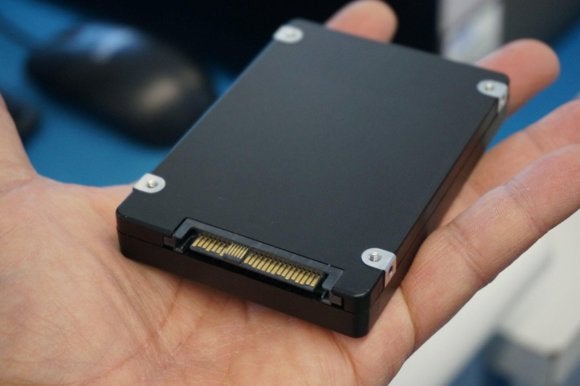Welcome to DU!
The truly grassroots left-of-center political community where regular people, not algorithms, drive the discussions and set the standards.
Join the community:
Create a free account
Support DU (and get rid of ads!):
Become a Star Member
Latest Breaking News
General Discussion
The DU Lounge
All Forums
Issue Forums
Culture Forums
Alliance Forums
Region Forums
Support Forums
Help & Search
The DU Lounge
Related: Culture Forums, Support ForumsThen and now - FBI fingerprint files 1944/Today's file comparison
THEN-

NOW-

InfoView thread info, including edit history
TrashPut this thread in your Trash Can (My DU » Trash Can)
BookmarkAdd this thread to your Bookmarks (My DU » Bookmarks)
3 replies, 883 views
ShareGet links to this post and/or share on social media
AlertAlert this post for a rule violation
PowersThere are no powers you can use on this post
EditCannot edit other people's posts
ReplyReply to this post
EditCannot edit other people's posts
Rec (6)
ReplyReply to this post
3 replies
 = new reply since forum marked as read
Highlight:
NoneDon't highlight anything
5 newestHighlight 5 most recent replies
= new reply since forum marked as read
Highlight:
NoneDon't highlight anything
5 newestHighlight 5 most recent replies
Then and now - FBI fingerprint files 1944/Today's file comparison (Original Post)
packman
Jun 2019
OP
htuttle
(23,738 posts)1. They didn't really go electronic until IAFIS in 1999
I got a taxicab permit in 1985, and they took three sets of fingerprints on index card type things. One for the city, one for the state, and the third got shipped to the FBI, where it went into a room that probably looked a lot like the one in 1944.
https://en.wikipedia.org/wiki/Integrated_Automated_Fingerprint_Identification_System
gratuitous
(82,849 posts)2. And friends, somewhere in Washington
Enshrined in some little folder, is a study in black and white of my fingerprints.
They got Arlo's, but I don't think they have mine.
Fla Dem
(23,743 posts)3. Looking at that picture, I couldn't imagine how the FBI could catalog that many finerprints
So I hunted down the source of your photo. Unbelievable. Amazing story and more great photos at link.
https://www.messynessychic.com/2016/03/24/inside-the-fbis-colossal-fingerprint-factory/
Inside the FBI’s Colossal Fingerprint Factory
BY MESSYNESSY MARCH 24, 2016
Photos by George Skadding for Life magazine (c) Getty Images
Before the FBI went digital, it looked a little more like a giant stock warehouse for Amazon.com. In the 1920s, the bureau was only employing 25 workers to classify around 800,000 print cards, but by 1943, there were more than 20,000 employees sorting through 70 million fingerprints. At the height of wartime, the archives were so overwhelmed that the FBI eventually moved into an 8,000 square foot facility in the National Guard Armory in Washington D.C. They called it the Fingerprint Factory.
With the war came new responsibilities for the FBI. No longer was it only investigating domestic crimes committed in the United States, the bureau was now tracking suspected spies, gathering information abroad, pursuing draft dodgers, tracking immigrants and even their own personnel who could be potential saboteurs. There were fingerprint cards for members of the armed forces, US foreign agents, war-material manufacturers and even all the government girls who were working amongst the labyrinthine archive of cards themselves. Everyone needed background checks. Agents looked into nearly 20,000 reports of sabotage during the war, of which they found 2,282 actual attempts.
Crime was increasing on the home front too as wartime made an ideal opportunity for defrauding the government and stealing from its vast military supplies.
Yes, the FBI had an actual file called “Notorious Dead Criminals”.
The thousands of women working at the FBI in the early 1940s were trained in the Henry System of fingerprint identification, a method used in the United States and other English-speaking countries which manually categorised fingerprints by their physiological characteristics.
Much more at link.
BY MESSYNESSY MARCH 24, 2016
Photos by George Skadding for Life magazine (c) Getty Images
Before the FBI went digital, it looked a little more like a giant stock warehouse for Amazon.com. In the 1920s, the bureau was only employing 25 workers to classify around 800,000 print cards, but by 1943, there were more than 20,000 employees sorting through 70 million fingerprints. At the height of wartime, the archives were so overwhelmed that the FBI eventually moved into an 8,000 square foot facility in the National Guard Armory in Washington D.C. They called it the Fingerprint Factory.
With the war came new responsibilities for the FBI. No longer was it only investigating domestic crimes committed in the United States, the bureau was now tracking suspected spies, gathering information abroad, pursuing draft dodgers, tracking immigrants and even their own personnel who could be potential saboteurs. There were fingerprint cards for members of the armed forces, US foreign agents, war-material manufacturers and even all the government girls who were working amongst the labyrinthine archive of cards themselves. Everyone needed background checks. Agents looked into nearly 20,000 reports of sabotage during the war, of which they found 2,282 actual attempts.
Crime was increasing on the home front too as wartime made an ideal opportunity for defrauding the government and stealing from its vast military supplies.
Yes, the FBI had an actual file called “Notorious Dead Criminals”.
The thousands of women working at the FBI in the early 1940s were trained in the Henry System of fingerprint identification, a method used in the United States and other English-speaking countries which manually categorised fingerprints by their physiological characteristics.
Much more at link.